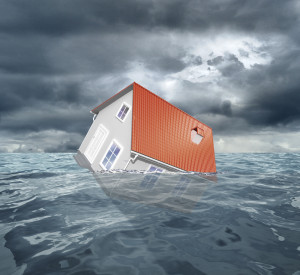What You Want to Know about Flood Insurance
The recent floods in Colorado have brought the subject of flood insurance back into the headlines. Floods can be devastating to both your home and financial situation and they can happen quickly. According to federal flood information, a flash flood can produce a wall of water that is 10 to 20 feet high and just a few inches of floodwater can cause tens of thousands of dollars worth of damage. Total flood insurance claims averaged more than $3.0 billion a year from 2003 to 2012.
Flood coverage can be confusing as far as who needs it, where is it available and what is actually covered. Here is a quick rundown of flood insurance basics and what you can expect to be covered if you have the unfortunate luck of being involved in a flood.
Should You Carry Flood Insurance
Depending on where you live, flood insurance may be required. Homes in high-risk flood areas are often required by law to carry the proper flood coverage.
Even if you are not required to carry coverage you may want to consider it, heavy rains, melting snowing and serious storms can result in flooding. People outside of high-risk areas file 20 percent of all NFIP claims and get one-third of all flood disaster assistance. Ask your agent if you should consider flood protection.
Homeowners Will Not Cover You
The majority of homeowners insurance policies will not cover flood damage. There is also no guarantee of federal disaster assistance which could leave you on the hook for serious repair bills. Statistics show that disaster assistance is issued for less than half of flooding events.
What is Covered?
When it comes to flood insurance you can choose between building coverage, content coverage or both. If you live in a low-risk area it is possible to buy a Preferred Risk Policy, which offers both structural and content protection.
According to FloodSmart.gov the following structural items are fully covered:
- The building and its foundation
- All electrical and plumbing systems
- Furnaces, central air conditioning systems, and water heaters
- Refrigerators, stoves and all other built-in appliances
- Installed carpeting
- Paneling, wallboard, bookcases and cabinets which are built in.
- Window blinds
- Detached garages, detached buildings require a separate building property policy
- Removal of debris
When it comes to personal property, the following is fully covered by most flood insurance policies:
- All personal belongings, includes clothing, furniture and electronic equipment
- Curtains and window coverings
- Any portable or window air conditioners
- Carpets that were not covered in building coverage
- Washing machines and dryers
- Freezers and any food items that were in them
- Valuable items such as jewelry or original artwork and furs. Coverage limited to $2,500
What is Not Covered?
There are a number of things that flood insurance does not cover:
- Damage caused by moisture, mildew or mold.
- Any currency, precious metals or valuable papers such as stock certificates
- Property or belongings outside of the building such as trees, plants, wells, septic systems, walks, decks, patios, fences, seawalls, hot tubs and swimming pools
- Living expenses
- Financial losses caused by business interruption or loss of use of insured property
- Most self-propelled vehicles such as cars, including their parts.
Coverage Limits
All flood insurance policies have limits, knowing those limits will help make sure you are fully covered in the event of disaster. In addition to coverage limits it is important to keep in mind that in almost all cases, a policy must be in force for 30 days prior to the event for coverage to apply.
- Structural Damage – Most polices limit building damage to a maximum of $250,000 for a single family home. Commercial buildings can be insured up to $500,000. Review your coverage limits anytime improvements are made to the house.
- Personal Contents – Content coverage is usually limited to $100,000 for residential buildings and $500,000 for a commercial building. In many cases there is no coverage for items in a basement. It is possible to buy basement coverage but be prepared for a big bill.
Floods can occur anywhere and often there will be very little time to gather your belongings. Flood insurance can be a lifesaver if you ever have the unfortunate luck of being caught by a flood. Contact your agent today in regards to your flood insurance options.

